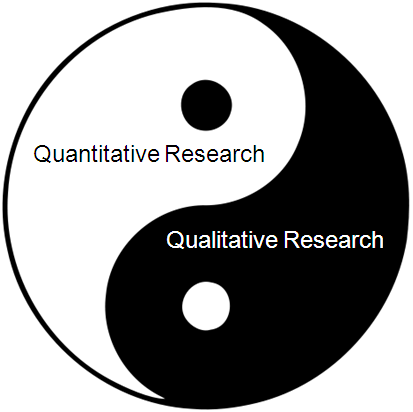
Employee retention is one of the main challenges for any organization; you may call it employee turnover, you may call it attrition, or churn, it is a big challenge for organization to retain talent. When talented and experienced people quit organizations, it puts a big strain on the productivity by affecting organization’s bottom line. To solve the employee retention problem, you must first understand the challenges involved.
With young professionals getting increasingly restless the challenge is not only to retain them but also to identify the future leaders among this talent pool. For example, L&T is facing the crisis of identifying the next line of leaders. Recently, the company increased the retirement age for CMD from 65 years to 70 years and 62 to 67 years for the other directors. According to a former employee, earlier a person would reach the level of DGM and at the most AGM level at the time of retirement.
Recruitment is a business function that requires business objectives, perspective, expertise, and the ability to find the right match that fits the running position. The hiring manager makes the final decision on who gets hired, while the recruiter manages the process, laying the foundation for hiring the right people. Any organization’s HR role is to convince the prospect with diplomacy and marketing skills and align the recruitment procedure to benefit the organization for a longer period. During the recruitment process, it is hard to grab the ideal candidate’s attention because the good ones are getting multiple offers simultaneously, there is a shortage of wholly qualified candidates the ones who are ready to take on the job.
With social media doing the searching of candidates which is shared by many other organizations tracking the success rate of recruitment has become very difficult. Organizations take time making a candidate go through multiple stages. Multiple stages of screening make it difficult for employers to close the position. Developing a data-driven mindset for hiring for various positions is a major challenge faced in talent acquisition.
Why 80,000 employees leave Infosys between January and March 2022? Top reason is salary. Infosys didn’t bother to provide enough salary hikes to its employees who started looking for opportunities elsewhere. It led to the ‘Big Quit.’ The world today is experiencing the era of the ‘Big Quit’ or the ‘Great Resignation’. There are organizations paying better salaries but are experiencing Big Quit.
Companies often struggle to retain talent due to various reasons. Common pitfalls include inadequate career development, lack of recognition, and not addressing work-life balance. Understanding and tackling these issues can help businesses keep their valuable employees.
Anand Mahindra advocated for liberal arts, stressed work quality over hours, by cheekily countering L&T chief’s 90-hour work week remark. Mahindra Group Chairman Anand Mahindra has once again captured attention with his thoughts on liberal arts education and work-life balance. Mahindra gives importance to a person’s work-life balance. Work-life balance is a key part of a healthy and productive work environment. An individual who achieves this balance successfully is ready to dedicate an equal amount of time to work-related tasks and personal matters without experiencing stress.
Speaking at an event, Mahindra passionately advocated for the importance of arts and culture in professional decision-making. “Even if you’re an engineer or an MBA, you must study arts and culture,” he said, highlighting the role of a well-rounded education. “We support art and culture because I believe it helps make better decisions by engaging the whole brain.” Mahindra stressed that understanding arts and culture enhances decision-making. “If you’re not spending time at home, with friends, or reading, how will you bring the right inputs to your decisions?” he questioned.
Talent retention is the process of keeping your best employees from leaving. Companies need to have a strategy to retain their top talent, as losing talented employees can be costly and disruptive. One study identifies that career growth, workplace well-being, competition within the industry, globalisation and the new employment landscape are the challenges of talent retention. Employees often cite a lack of career growth opportunities as one of the main reasons for leaving their jobs. Besides, lack of work-life balance, feeling unappreciated, low pay, and lack of work culture fit are other reasons that contribute to attrition. The attrition rate is increasing even more due to unknown reasons in a post-pandemic world.
The pandemic has made almost everyone travel back to their home / native places. And this has made the employees preferring the hybrid work culture. People like to stay home and work for a few hours. This helps them to balance their work-life time. Moreover, the hectic daily commute is saved on a large scale. So, the productivity level is retained, and many resources are saved. That’s why many employees are preferring the hybrid or remote work module, these days.
Many people have found that flexible working hours are vital for ensuring work-life balance. Hence, instead of a fixed time, employees prefer to switch to flexible working hours. If the company is not allowing flexible hours, employees are preferring to switch the company rather. Another fact is, during the lockdown, many people found an alternative way to earn through their hobbies or skills. Social media platforms and online opportunities opened many doors of revenue for people around the world. And people are exploring many new entrepreneurship opportunities.
The COVID-19 pandemic brought on high levels of upheaval and introspection, causing people to re-examine their priorities. In a new Indeed survey of 1,005 people who voluntarily resigned from at least two jobs since March 2020, 92% said the pandemic made them feel life is too short to stay in a job they weren’t passionate about.
People have become more aware of the social impacts and thus started working on social causes. Having migrated to their hometown, many people have found a way to earn through agriculture and have shifted their focus to agriculture. Hence, such people also prefer the work from the home module.
Despite its financial success, Reliance Industries faces a persistent issue: high employee turnover. The biggest shortcoming employees face in Reliance is in areas such as work-life balance, career development, and work environment. While competitive salaries fail to retain talent, solutions lie in increasing employee engagement, empowering employees, and cultivating a positive culture. Reliance needs to address employee retention issues and secure a more loyal workforce. By focusing on employee well-being and career development, Reliance can maintain its position as a top employer while reaping the benefits of a stable and dedicated workforce.
Hindustan Unilever Ltd. (HUL) faced challenges in meeting changing employee expectations. As competition and demands increased, HUL fell from being the top dream employer. Younger employees expected quicker career growth and more flexible work arrangements than HUL’s traditional model provided. Another big reason for quitting multiple jobs among the younger generations is they want instant gratification, they expect a pat on back plus rise in salary, plus promotion all of this instantly.
Conclusion
Employers should ensure a happy work environment if they want to retain their employees. This will help in creating client delight, sustaining the current projects, acquiring new clients, business growth and business expansion. Accept new norms, flexibility for all the employees, build a vision for all employees – visualise the growth path in the company, motivate employees to do better. Certainly, monetary benefits play a major role in retaining employees. But organisations surely can bring new cultures and vibrancy to the work environment to retain employees.













































